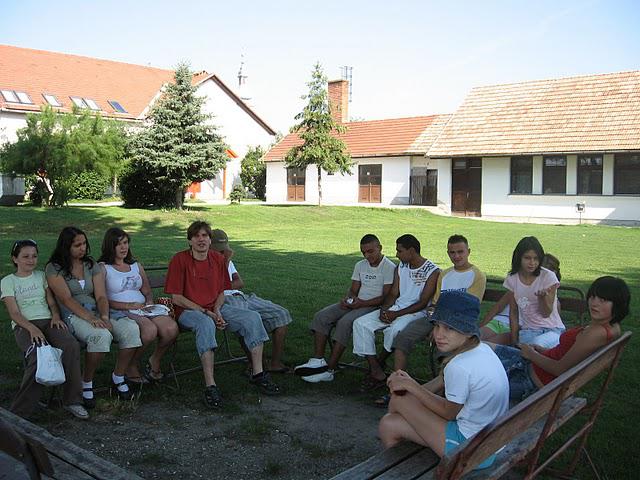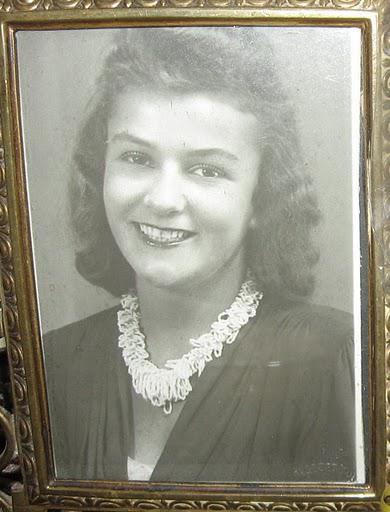



History teacher and youth educator Péter Heindl is more like a father figure than a teacher to his students in Magyarmecske, a remote and poverty-stricken Hungarian village near the Croatian border. After returning from a teacher training course at Yad Vashem’s International School for Holocaust Studies, Heindl not only shared his fascinating experience with “his kids,” but was also eager to teach them the human and moral significance of the history of the Holocaust.
In order to raise his students’ interest and curiosity, Heindl hung on the school notice board an old photo of a young, school-age girl with the following lines underneath: “Lili Ney: a girl from Magyarmecske disappeared from our village. A few weeks later she was killed. Who was she? Why did she die? She was not the only person from Magyarmecske to suffer this fate. Let’s find out together the history of Lili Ney and the others!” The poster had an enormous effect on the students; dozens wanted to take part in the investigation sessions Heindl scheduled one afternoon a week for the entire school year. “The crime story opening solved one of the biggest challenges of Holocaust education,” explains Heindl, “how to involve young learners in dealing with a gloomy topic that only adults feel is important enough to remember?”
During the series of “detective workshops,” Heindl and the students gradually found out the truth about the events of WWII. Heindl, the “chief detective,” carefully chose and planned the program from week to week, making sure that each phase revealed more details, and the students did not lose interest over the yearlong process.
With the help of a local historian and researcher (István Vörös, also a Yad Vashem graduate) they learned about the various religious communities in the village at the time of the war, and discovered that there were once 17 Jewish and two Roma families living there. “Aunt Cinka” (Bence Kálmánné), an eldery lady from the village who still remembered the events from 64 years earlier, took the group on a guided tour of the village, pointing out former Jewish houses and describing each family that lived there, as well as their deportations and the plunder of their possessions. Students were shocked to find out that a real mass murder had taken place in their small village. Based on Aunt Cinka’s account, a Jewish survivor from the village, László Szántó (Steiner), was traced in Budapest. Szántó visited the young students in Magyarmecske, bringing with him some old photos, including one of himself with the two children from the Ney family outside their house.
Further lessons for this special group of investigators included a visit to the closest living Jewish community in the city of Pécs and a meeting with their chief rabbi, András Schönberger; a conversation about questions of responsibility with the Catholic priest of Alsószentmárton, who actively ministers Roma groups in Magyarmecske; a visit to the Jewish cemetery in Kacsóta, where most of the Jews from Magyarmecske are buried; and a two-day excursion to the Holocaust Memorial Center and the Jewish quarter and museum in Budapest.
The school year ended with the discovery of the house belonging to Righteous Among the Nations Erzsébet Tóth (née Juhász). Inside the house, the current owners were surprised to be shown an original hiding place. “The topic was a perfect one to close the detective story,” Heindl says. “It drew my students’ attention to positive examples of human behaviour in times when inhumanity prevailed.”
The end of the school year, however, did not mean the termination of the project, which had already surpassed all the expectations of its creator. On 8 August 2008, the whole village actively joined the group’s initiative, and a memorial plaque to commemorate the 11 Jewish victims from Magyarmecske was dedicated on the wall of the local school (once home to the Jewish Ledrer family). An exhibition was also organized from the findings of the student group. The national media took great interest in the project, and coverage of the work was broadcast and reported in several different forms. As a result, Heindl soon received an emotional phone call from Judit Ney, Lili’s niece, who had read a newspaper article on the project. More family photos were gained from Judit, one of which shows the Ney children standing together with the Roma children of the village. “My eyes filled with tears when I saw the photo,” recalls Heindl. “No matter how small the Jewish community is now (only two survived), almost seven decades after their destruction, it has become a living community once more – for my students as well as the entire village.”










